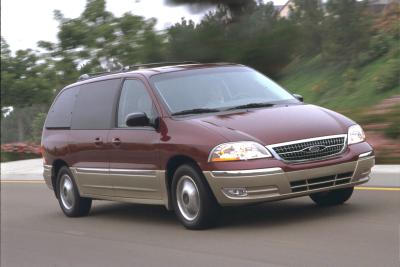
Ford launched the Windstar in the 1995 model year to complement its existing Aerostar minivan. The 1999 Windstar had two engine options available. The standard engine was a 150-horsepower, 3.0-liter V-6 and its optional engine was a 3.8-liter V-6 that cranked out 200 horsepower. Both engines used a camshaft position sensor to relay the camshaft’s rotational speed to the powertrain control module to synchronize the fuel system with the camshaft. Replacing the camshaft position sensor on both of the Windstar’s engines is a straightforward task most home mechanics can perform.
Open the hood and loosen the pinch bolt on the negative battery cable end using a combination wrench. Remove the negative battery cable from the battery and move it aside to prevent accidental reconnection.
Find the camshaft position sensor on the top of the engine, near the driver’s side, rear of the engine compartment.
Press and hold the unlocking button on the camshaft position sensor’s wiring harness and unplug the harness.
Remove the two bolts securing the camshaft position sensor to the camshaft synchronizer using a ratchet and socket, and lift the sensor off the engine. Notate the position of the sensor as you remove it.
Set the camshaft position sensor on the camshaft synchronizer and hand-thread its retaining bolt.
Tighten the camshaft position sensor’s retaining bolts to between 23 and 30 inch-pounds using an inch-pound torque wrench and socket.
Plug the wiring harness into the crankshaft position sensor.
Press the negative battery cable end onto the negative battery terminal and tighten the pinch bolt to 7 foot-pounds with a torque wrench and socket.
Drive the Windstar as you normally would for approximately 10 miles to allow the vehicle’s electronics to go through their relearn procedures. You likely will experience abnormal running and shifting during the 10-mile drive; this is normal.